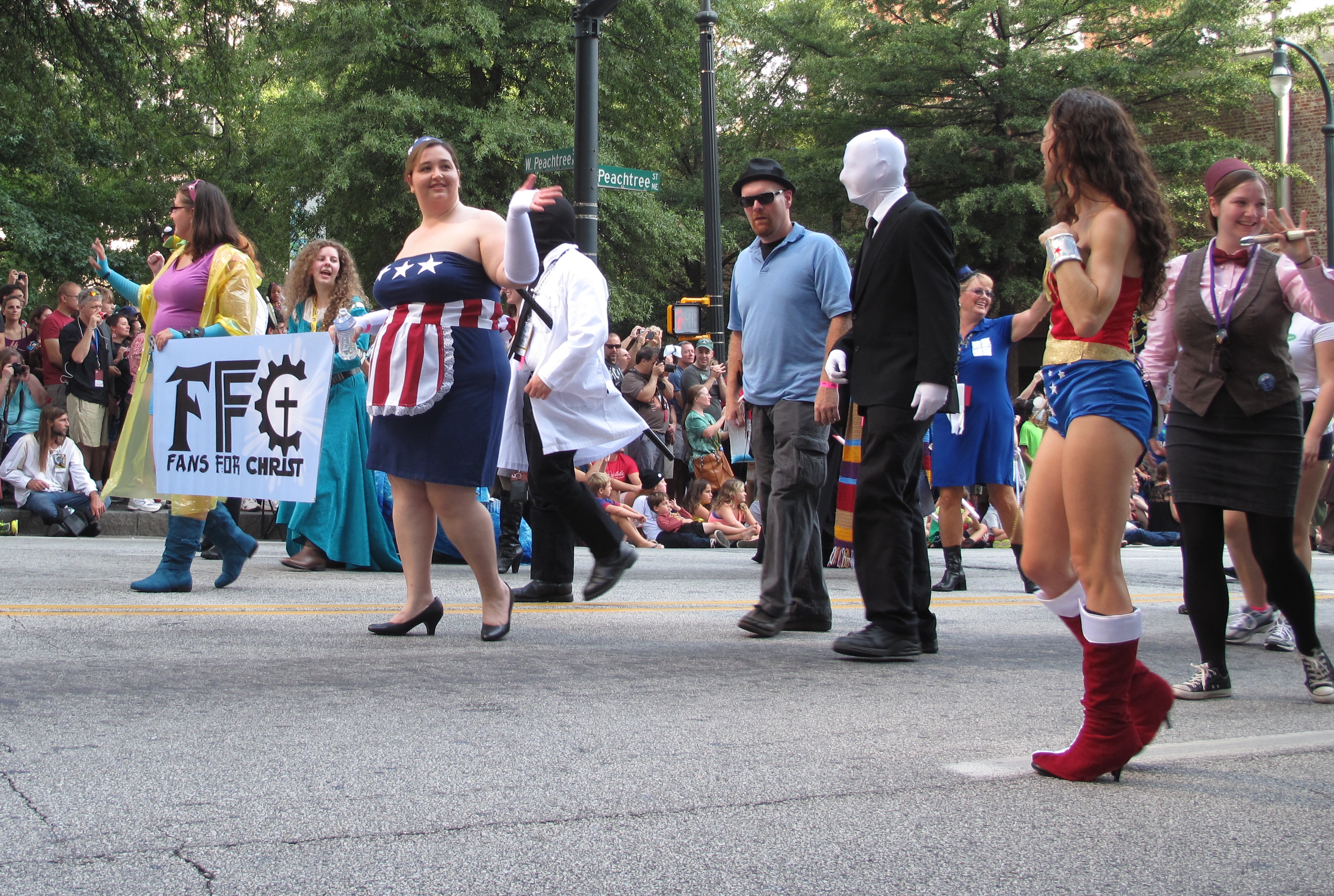Eric Reinders Every Labor Day weekend, more than fifty thousand people gather in Atlanta to talk about, and dress up as, their favorite fantasies. Naturally, there is religion in all this. It’s mostly Christianity, although not always.

There are panels on: demons, angels, sin and salvation, reincarnation, ultimate reality, the origin of life, and the point of it all. Is the “thirteenth colony” in Battlestar Galactica Christianity? Is the Tardis God? Is Data a Christ-figure? Are angels sexy, or sinister, or both? Most of these topics fall within the range of the suspension of disbelief, but not all. The programming is divided into tracks, and among them is a Skeptics track, for “free thinkers” or I would say, for debunkers. They debunk bigfoot, psychoanalysis, online scams, and they debunk God. They promote atheism “evangelically,” as a friend of mine said.


One of the lobby tables is occupied by Fans for Christ, a group started by Stephen Weese, author of God Loves the Freaks. They march in the parade, as do the Skeptics, and the Flying Spaghetti Monster. At the 2009 convention, I asked a couple of these Fans for Christ to explain themselves.
Dragon-Con is a celebration of all things unreal. So I can’t help feeling that the Fans for Christ and the Skeptics are both out of place at Dragon-Con, for the same reason: they insist on Truth at an event which collaboratively, riotously, suspends disbelief. Lots of fictional characters have risen from the dead and saved the world. But one character is different, because, apparently, he really did it. In the lobby of the Hilton after the parade, in the swirling mass of wizards and fairies and gods, that claim rather strains credulity. And yet, in that same festive brew, disbelief feels pedantic, and the Skeptics seem a kind of cognitive wet blanket, the nagging voice that insists on saying: the magician did not really pull the rabbit out of the hat.
Eric Reinders is an Associate Professor at Emory University in the Department of Religion. He specializes in Chinese religion, particularly Medieval Buddhism, Buddhist monasticism, and Christian missionary cultures. The primary themes of his work are cultural constructions of the body, destruction studies, and comparative fantasy.
